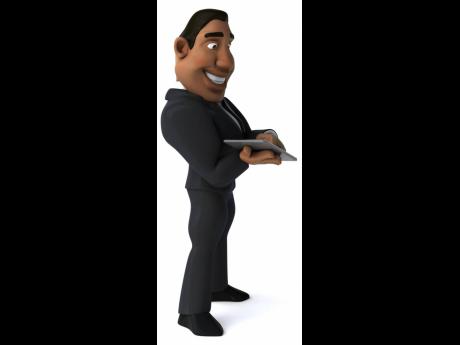Francis Wade | Thought leadership in the age of technology
ADVISORY COLUMN: PRODUCTIVITY
Are you someone who leads by sharing your best ideas with a defined audience? As a thought leader, you may have noticed that technology has made certain tasks easier, but the overall challenge has become formidable.
As mentioned in my column dated October 4, I have been hosting multi-day virtual conferences. For each one, I have invited thought leaders to be presenters, but recently, a separation has developed between experienced experts (elders) and tech-savvy communicators (youngsters).
The former have been thinking about issues in their field for some time: publishing books, articles, or conference presentations. Spending a decade or more in reflection and study, their deep content is provocative. Furthermore, they have probably assisted many other experts over their careers.
In general, they are in no hurry as they are accustomed to cycles lasting months or even years between major outputs. From their point of view, it takes time to develop sound ideas – the wait between the first draft of a book and its appearance in a bookstore.
At the other extreme lie their young, digital counterparts: youngsters who also intend to influence others with their thinking and creative products. However, they use the newest technologies to dramatically shorten the cycle between inspiration and public consumption.
Employing the latest virtual channels, they disseminate a high volume of content. As such, they are conscious of their online image, measuring success by the number of likes, followers, and subscribers they garner.
Recently, these groups have been drifting further apart, leading to complaints. If you belong to or interact with either group, here is some advice.
Elders must pivot
I recall a conversation with a colleague who had some fine ideas about marketing products in Jamaica. When I suggested he share them publicly, he refused. “Someone will steal them!” he complained.
When he migrated a few years later, all his plans went with him. But his limited thinking lives on in the heads of too many elders. They grew up in an environment of scarcity, where an original theory or solution was rare and the opportunities to reach an audience were few.
Case in point: As a young management consultant in the 1980s, I struggled to produce papers and give speeches due to the cost and time involved.
Today, such barriers have been removed, but most elders have not caught up. They may know how to find and download ideas from other thinkers but don’t know how to use a blog, vlog, podcast, or social media to build an audience.
If you are an elder, one place to start is to develop an ‘owned’ asset – one that you control completely – rather than ‘renting’ temporary space on a social network.
Establish a website that allows you to share your creative outputs via text, audio, video, or graphics. Then, create a catalogue of your best products. When you have at least 10 or 20 decent units, publish them in sequence and start to build an audience. Use your friends on social media as a foundation, and send out links to other thought leaders.
Youngsters must use precedents
Thought leaders who are tech-savvy are often enamoured with their increasing ability to create followers. It’s never been easier to do so, and some self-proclaimed youthful ‘experts’ have been able to attract millions.
As such, they spend a great deal of time seeking better social-media tricks, slicker graphics, more effective hashtags, and nicer filters. They look up to established influencers who are using these tweaks to extend their reach.
However, if you dig a bit deeper, you may find that some youngsters are ‘all hat and no cattle’. In other words, while their followership is growing, their content comprises no more than shallow ideas and worn clichés.
As such, their followers tend to be young and impressionable, honestly believing that they are hearing brilliant, breakthrough insights.
Before the inevitable loss of interest comes, there is something youngsters could learn from elders: how to solve novel problems using existing research and fresh imagination. Following this approach would allow them to develop a better-quality audience that sticks around for truly original thinking.
By the same token, many elders are waiting for their wisdom to be tapped. Consequently, they just aren’t learning the aggressive techniques youngsters have acquired to reach their audience: they need to become active, skilful users of LinkedIn, Twitter, and Facebook.
For now, the momentum lies with those who use the latest technology, but it should swing back. Unfortunately, we can’t wait. In these tumultuous times, we require both elders and youngsters to develop the skills needed to make their contribution.
If it means embracing an uncomfortable challenge, so be it. The world needs people who combine high-quality thinking and channels of easy access to help solve the pressing problems of the day.
Francis Wade is a management consultant and author of Perfect Time-Based Productivity. To receive a summary of links to past columns or give feedback, email columns@fwconsulting.com.

